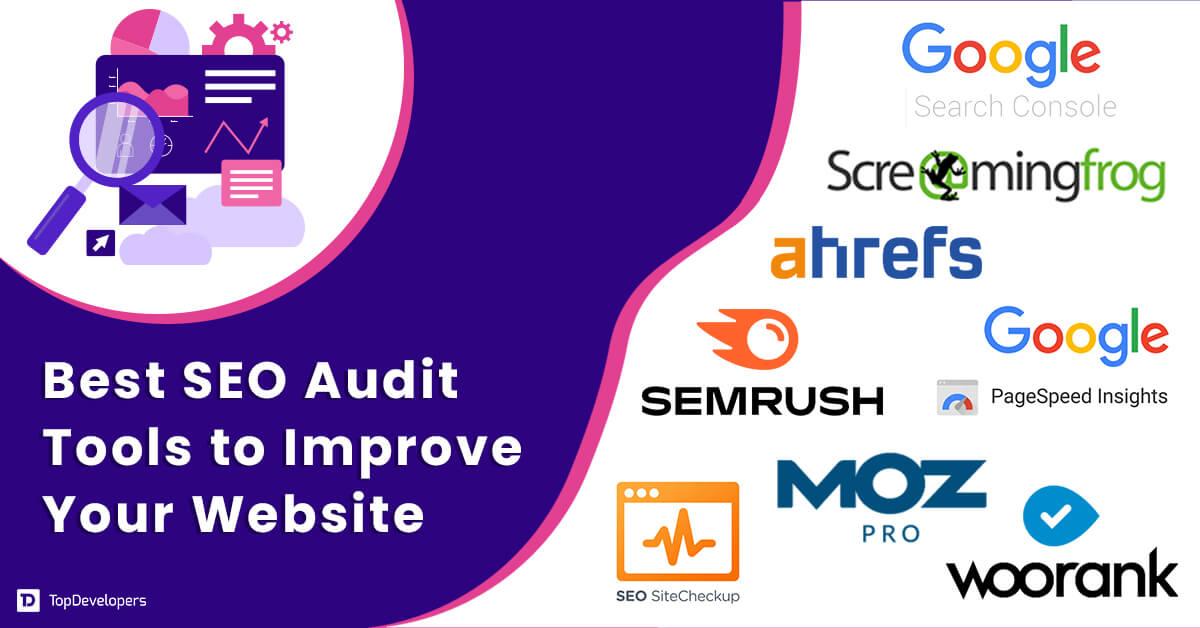Introduction:
Hey there! If you’ve ever scrolled through your favorite social media platform adn marveled at how some brands seem to effortlessly connect wiht their audience,you’ve witnessed the magic of social media marketing in action. But what exactly is social media marketing, and why is it more critical than ever in 2025? Whether you’re a small business owner, a budding entrepreneur, or just someone curious about the digital landscape, understanding this dynamic field can open up a world of opportunities for you.in today’s fast-paced digital age, social media isn’t just a place to share memes or catch up with friends—it’s a powerful marketing tool that can elevate your brand, boost engagement, and drive sales. But fear not! Crafting a accomplished social media marketing strategy doesn’t have to be overwhelming.In this article, we’ll break down the essentials of social media marketing and guide you through the process of creating a tailored strategy that resonates with your audience in 2025 and beyond. Ready to dive in? Let’s get started!
Understanding the Essentials of Social Media Marketing
Social media marketing is more than just posting updates on various platforms; it’s a strategic approach to building brand awareness and driving engagement with your audience. In 2025, understanding the essentials of this dynamic discipline will be crucial for businesses aiming to thrive in an increasingly digital landscape. To effectively harness the power of social media,it’s essential to know how to create a compelling strategy that resonates with your target audience.
At the heart of any successful social media marketing strategy is a strong understanding of your audience. Begin by clearly defining your target demographic. Consider factors such as:
- Age
- Gender
- Location
- Interests
- Online Behavior
By identifying these characteristics, you can tailor your content to meet the needs and preferences of your audience, ensuring higher engagement levels and a stronger connection.
Next, content creation plays a pivotal role in your overall strategy. In 2025,the demand for authentic and engaging content will be at an all-time high. Focus on creating a mix of content types that include:
- educational posts
- Entertaining videos
- Interactive polls and quizzes
- Behind-the-scenes glimpses
Incorporating video content and user-generated posts can enhance your brand’s relatability and encourage community involvement. Remember, consistency is key; maintaining a regular posting schedule will help keep your audience engaged and informed.
Another critical element is analytics. Utilizing social media analytics tools allows you to monitor the performance of your campaigns in real-time. Key metrics to focus on include:
| metric | Description |
|---|---|
| Engagement Rate | Measures likes, shares, and comments relative to your total followers. |
| Reach | The number of unique users who see your content. |
| conversion Rate | Tracks the percentage of users who take a desired action after engaging with your content. |
By analyzing these metrics, you can refine your strategy, identify what works, and pivot when necessary to better meet your audience’s needs.
Lastly, staying ahead of trends and adapting to changes in the social media landscape is vital. As new platforms emerge and user behaviors evolve, continuous learning and flexibility will be your best allies. Engage with your audience, foster relationships, and don’t be afraid to experiment with new ideas. In the fast-paced world of social media marketing, the ability to innovate will set you apart from the competition.

the Evolution of Social Media Platforms in 2025
By 2025, social media platforms have undergone a remarkable change, adapting to the ever-evolving needs of users and businesses alike.The rise of Augmented Reality (AR) and Virtual Reality (VR) has revolutionized how brands engage with their audiences, allowing for immersive experiences that were previously unimaginable. Imagine a world where consumers can try on clothes virtually or see how a piece of furniture looks in their living room before making a purchase. This innovative approach not only captivates users but also enhances brand loyalty.
As platforms continue to innovate,the integration of AI-driven algorithms has become more sophisticated. These algorithms not only personalize content feeds based on user behavior but also optimize advertising strategies for businesses. Marketers now have access to granular data insights that help identify target audiences with pinpoint accuracy.This means that crafting messages that resonate with specific demographics has never been easier, making your campaigns more effective than ever before.
In this dynamic landscape, it’s crucial for brands to stay ahead of the curve by adopting emerging platforms and trends.Here are some key strategies that can be implemented:
- utilize AR and VR: Create engaging content that allows users to interact with your products in real time.
- Leverage AI Analytics: Use advanced analytics tools to track user engagement and refine your marketing strategies.
- Embrace Micro-Influencer Collaborations: Partner with niche influencers to reach highly targeted audiences authentically.
- Focus on Sustainability: Highlight eco-friendly practices to align with consumer values.
With the rise of social commerce,where users can shop directly through social media apps,businesses must develop seamless shopping experiences. This means integrating payment systems within platforms to reduce friction in the purchasing process. Companies that successfully blend entertainment and shopping will likely see higher conversion rates and customer satisfaction.
| Platform | Key Features | Target Audience |
|---|---|---|
| Shopping tags, AR filters | Millennials & Gen Z | |
| Marketplace, Live shopping | All demographics | |
| TikTok | Shoppable videos, trends | Gen Z & Millennials |
As we delve deeper into 2025, the future of social media marketing will be defined by creativity, authenticity, and a keen understanding of audience behavior. Brands that embrace these changes will not only thrive but will also set the stage for what’s to come in the world of digital marketing.
Identifying Your Target Audience for Maximum Impact
Understanding who your audience is forms the backbone of any successful social media marketing strategy. Without a clear picture of your target demographic, your efforts can fall flat, failing to resonate with the very people you aim to engage. Therefore, investing time in identifying and analyzing your audience is crucial for maximizing your impact in 2025.
Start by defining demographic characteristics that are relevant to your brand. Consider factors such as:
- Age: what age groups are most likely to use your product or service?
- Gender: does your offering appeal more to one gender than the other?
- Location: Are you targeting a local, national, or global audience?
- Income Level: What is the purchasing power of your audience?
After establishing these basics, delve deeper into psychographics, which encompass the attitudes, interests, and lifestyles of your potential customers. Knowing what drives your audience can led to more tailored messaging that truly resonates. Key areas to explore include:
- Interests: What hobbies or activities do they enjoy?
- Values: What principles are crucial to them, and how do these align with your brand?
- Challenges: What problems do they face that your product can solve?
Utilizing data analytics tools can significantly enhance your understanding of your audience. Platforms like Google Analytics or social media insights provide invaluable data about who is interacting with your content. By examining engagement metrics such as likes, shares, and comments, you can start to paint a clearer picture of your audience’s preferences and behaviors. This data-centric approach allows you to create content that speaks directly to the interests and needs of your audience.
Moreover, consider creating customer personas. These are fictional representations of your ideal customers based on real data and insights. A well-crafted persona can help team members envision and understand your audience better, guiding content creation and marketing strategies. Here’s a simple example:
| Persona | Age | Interests | Goals |
|---|---|---|---|
| Eco-conscious Emma | 28 | Lasting living, Yoga | To find eco-friendly products |
| Tech-savvy tom | 35 | Gadgets, Gaming | To stay updated on tech trends |
By employing these strategies to identify your target audience, you’ll pave the way for more effective social media marketing in 2025. Tailored messaging not only fosters engagement but also builds long-term relationships with your customers, ultimately driving brand loyalty and conversions.
crafting Compelling Content That Engages and Converts
In the fast-paced world of social media, creating content that resonates is essential for capturing audience attention and driving conversions. To craft compelling content, one must understand the target audience deeply. This involves researching their interests, pain points, and preferences. Only by aligning your content with their needs can you create a genuine connection that encourages engagement.
Engaging content often leverages storytelling techniques. Narratives not only make your message more relatable but also evoke emotions that can motivate users to take action. Consider using the following elements to enhance your storytelling:
- Personal Experiences: Share stories that illustrate your journey or the journey of your customers.
- visuals: Incorporate images and videos that complement your narrative and capture attention.
- Call-to-Actions: Use clear and compelling CTAs to guide your audience toward the next steps.
Another critical aspect of engaging content is its format. Diversifying how you present facts can significantly impact user interaction. Here’s a simple table showcasing different content formats and their effectiveness:
| Content Format | Engagement Potential | Conversion Rate |
|---|---|---|
| Videos | High | 25% |
| Infographics | Medium | 15% |
| Blog Posts | Medium | 10% |
| Podcasts | Low | 5% |
Lastly, don’t forget the power of analytics. Regularly assess your content performance to identify what resonates with your audience. Use metrics such as engagement rates, shares, and conversions to inform your future content strategies. By continuously refining your approach based on data, you can ensure that your content remains not only engaging but also effective in driving desired outcomes.

Leveraging Data Analytics to Refine your Strategy
In today’s digital landscape, data analytics is not just an option; it’s a necessity for refining your social media marketing strategy.By leveraging the vast amounts of data generated through social media interactions, businesses can gain deep insights that inform their decision-making processes.This enables companies to not only understand their audience better but also to tailor their strategies to meet evolving consumer needs.
One of the most effective ways to harness data analytics is through social listening.this involves monitoring social media platforms to gather insights into audience sentiments, preferences, and trends. By analyzing conversations around your brand, competitors, and industry, you can identify key themes and topics that resonate with your target demographics. This not only allows you to create more relevant content but also positions your brand as an authority in your niche.
Another powerful tool in the arsenal of data analytics is performance metrics. Tracking key performance indicators (KPIs) such as engagement rates, click-through rates, and conversion rates can provide valuable information on what works and what doesn’t.By understanding which types of content perform best, you can refine your strategy to focus on high-impact activities. Consider creating a table to visualize these metrics:
| Content Type | Engagement Rate (%) | Conversion Rate (%) |
|---|---|---|
| Videos | 12.5 | 3.8 |
| Infographics | 10.2 | 2.5 |
| Blog Posts | 8.9 | 1.9 |
Moreover, A/B testing is invaluable in the realm of data analytics. By experimenting with different types of content, headlines, and posting times, you can determine what yields the best results for your audience. this iterative approach not only helps in optimizing content but also fosters a culture of continuous improvement within your marketing team.
Lastly, integrating data analytics with customer feedback can provide a holistic view of your audience’s preferences. Surveys, polls, and direct interactions can be analyzed alongside social media metrics to form a comprehensive understanding of your customer base. This combination allows for strategic pivots, ensuring that your social media marketing efforts remain relevant and impactful in a rapidly changing surroundings.
Building Authentic Relationships Through Community Engagement
Engaging with your community on social media is not just about broadcasting messages; it’s about building authentic relationships that resonate with your audience. in 2025, brands must prioritize genuine interactions rather than mere transactions. By fostering a sense of belonging among your followers, you can create a loyal customer base that feels personally connected to your brand.
To cultivate these meaningful relationships, consider implementing the following strategies:
- Be obvious: Share behind-the-scenes content that gives your audience insight into your brand’s values and processes.
- Encourage Feedback: Actively seek opinions from your community through polls, surveys, and comments. This not only shows that you value their input, but also helps you tailor your offerings.
- Highlight User-Generated Content: Feature content created by your customers. This not only builds community but also enhances credibility and trust in your brand.
Moreover, regularly participating in conversations can significantly enhance your brand’s presence. Responding to comments, engaging with followers’ posts, and joining relevant discussions on social platforms goes a long way in creating a two-way interaction channel. This engagement demonstrates that you are not just another brand pushing content but a relatable entity that genuinely cares about its customers.
Consistency is key in maintaining these relationships. Establish a regular posting schedule that includes a mix of promotional and community-focused content. This balance ensures that your audience remains engaged without feeling overwhelmed by constant marketing messages. Incorporating community-centric initiatives can also enhance your brand image:
| Initiative | Description |
|---|---|
| Local Sponsorships | Support local events or charities to foster goodwill and enhance community ties. |
| Interactive Campaigns | Run contests or challenges that encourage participation and creativity from your audience. |
| Live Q&As | Host sessions where followers can ask questions in real-time, promoting open dialog. |
Ultimately, the goal is to create a vibrant community around your brand. By prioritizing authentic engagement and fostering genuine connections, you not only enhance customer loyalty but also position your brand as an integral part of your audience’s lives. This shift from transactional to relational marketing will set you apart in the competitive landscape of social media marketing in 2025.

Choosing the Right Social Media Channels for Your Brand
In the ever-evolving landscape of social media, selecting the right platforms for your brand is crucial.Not all channels will serve your business equally; it’s essential to understand where your target audience spends their time and how they engage with content. Start by identifying your audience demographics.Are they predominantly young adults, professionals, or a mix? This insight will guide you toward the platforms that resonate most with your prospective customers.
Consider the nature of your content. Different platforms cater to different types of media. For example:
- Visual content: If your brand relies heavily on images or videos, platforms like Instagram and TikTok are ideal for showcasing your products creatively.
- Text-based content: For brands that thrive on storytelling or professional insights, twitter and LinkedIn can facilitate meaningful engagement with your audience.
- Community interaction: Facebook and reddit offer spaces for building community and fostering discussions, making them great for brands aiming to create a loyal customer base.
Next,assess the competitive landscape. Identify where your competitors are most active and successful.This doesn’t mean you should follow them blindly; instead, analyze their strategies and find gaps in their approach that your brand can fill. This could be through unique content, a different tone of voice, or even engaging with customers in a way they haven’t explored.
Lastly, keep an eye on emerging trends and platforms. Just because a platform is popular now doesn’t mean it will remain relevant in the future. Stay adaptable and be willing to experiment with new channels. As you monitor these trends, don’t forget to measure the performance of your social media efforts. Use analytics tools to track engagement rates, conversion metrics, and customer feedback.This data will help you refine your strategy, ensuring you’re investing your resources in the most effective channels.
| Platform | Best For |
|---|---|
| Visual storytelling, brand aesthetics | |
| Real-time updates, customer service | |
| Professional networking, B2B marketing | |
| TikTok | Short-form video content, trends |
| Community building, events |

Setting Clear Goals and Measuring Success in Real time
Establishing clear goals is foundational to any successful social media marketing strategy. These goals should align with your overall business objectives and be specific, measurable, achievable, relevant, and time-bound (SMART). By defining what you want to achieve, whether it’s increasing brand awareness, generating leads, or boosting sales, you can create a focused approach that drives results.
To effectively measure success in real-time,leverage a mix of analytics tools that can provide insights into your social media performance. These tools not only help in tracking progress against your goals but also allow for immediate adjustments to your strategy. Consider monitoring key performance indicators (KPIs) such as:
- Engagement Rate: Likes, comments, shares, and saves.
- Reach: The number of unique users who see your content.
- Conversion Rate: The percentage of users who take a desired action after engaging with your content.
- Follower Growth: The increase in followers over time.
Real-time measurement allows you to understand which content resonates with your audience. If a particular post is performing well,consider amplifying its reach through paid promotions or creating similar content. Conversely,if something isn’t working,you can pivot quickly,minimizing wasted effort and maximizing engagement.
Setting up a dashboard for your social media metrics can streamline this process. Use tools like Google Analytics, hootsuite, or Buffer that allow you to visualize your data effectively. Here’s an example of how you might structure your KPIs in a simple table:
| Goal | Current Status | Target | Deadline |
|---|---|---|---|
| Increase Brand Awareness | 10,000 Reach | 15,000 Reach | End of Q2 |
| Boost Engagement | 2% Engagement Rate | 5% Engagement Rate | End of Q3 |
| Grow Followers | 5,000 Followers | 10,000 Followers | End of the Year |
By keeping your goals clear and your measurements in check, you can navigate the ever-evolving landscape of social media marketing with confidence. Remember, the key is not just to set those targets but to remain flexible and responsive to the feedback your data provides.

Staying Ahead of Trends: What to Watch for in Social Media
As we step into 2025, it’s essential to keep an eye on the ever-evolving landscape of social media. Adapting to new trends not only enhances your brand’s visibility but also ensures you stay relevant in a crowded marketplace. Here are some key trends to watch for:
- Short-Form Video Content: Platforms like TikTok and Instagram Reels are leading the charge. engaging bite-sized videos can convey messages quickly and effectively, making them a must in any strategy.
- Augmented Reality (AR) Experiences: AR filters and experiences on platforms such as Snapchat and Instagram are becoming increasingly popular. Brands can leverage this technology to create interactive experiences that captivate users.
- Social Commerce: The integration of e-commerce with social media is on the rise. Features like Instagram Shops and Facebook Marketplace allow brands to turn social interaction into direct sales.
- Influencer Collaborations: Micro and nano influencers are gaining traction. Their engaged audiences frequently enough provide better ROI than larger influencers, making personalized campaigns more effective.
Understanding these trends can definitely help you craft a more effective social media marketing strategy. To illustrate the potential impact of embracing these trends, consider the table below:
| Trend | Potential Impact |
|---|---|
| Short-Form Video | Increased engagement and brand awareness |
| AR Experiences | Enhanced customer interaction and retention |
| Social Commerce | Direct sales growth and streamlined customer journey |
| Influencer Collaborations | Higher trust and authenticity in marketing |
Lastly, don’t underestimate the power of analytics. Monitoring your social media performance allows you to tweak your strategy in real time. By leveraging tools that provide insights into audience behavior,engagement rates,and conversion metrics,you can stay ahead of the game.
Remember, staying ahead of trends isn’t just about following what’s popular; it’s about understanding your audience’s needs and adapting your approach accordingly. By integrating these trends into a comprehensive strategy, you can position your brand for success in the dynamic world of social media marketing.

Implementing a Continuous Improvement Loop for Your Strategy
To truly harness the potential of your social media marketing strategy, it’s essential to adopt a continuous improvement loop. This approach ensures that your strategy evolves in real-time, adapting to changes in audience behavior, platform algorithms, and market trends. Here’s how to effectively implement this cycle:
- Assess Your Current Strategy: Start by evaluating your existing social media efforts. What’s working? What’s not? Use analytics tools to gather data on engagement rates, conversion rates, and overall reach.
- Set Clear Goals: Define specific, measurable objectives. Whether it’s increasing brand awareness or driving website traffic, having clear goals will guide your improvement efforts.
- test and Experiment: Don’t be afraid to try new tactics.A/B testing different types of content, posting schedules, or promotional strategies can yield valuable insights.
Onc you have implemented new strategies, it’s crucial to monitor the outcomes closely. Regularly review your analytics to assess the impact of changes. This data will inform your next steps, allowing you to refine your approach continuously.The key is to remain flexible and responsive to what the data reveals.
Additionally, gathering feedback from your audience can provide rich insights that quantitative data alone may miss. Engage with your followers through polls, surveys, or direct messages to understand their preferences better. Consider incorporating a feedback loop where you regularly solicit and act on user input.
document your findings and adjustments. Creating a visual depiction of your continuous improvement cycle can definitely help you track progress and identify patterns. A simple table might look like this:
| Evaluation Phase | Action Taken | Outcome |
|---|---|---|
| Q1 Analysis | Shifted focus to video content | Increased engagement by 30% |
| Q2 Feedback | Implemented user polls | Improved content relevancy |
| Q3 Experiment | tested different posting times | Boosted reach by 25% |
By following these steps, you not only enhance your social media marketing strategy but also foster a culture of innovation within your team. keep the cycle rolling, and watch your brand’s online presence flourish!
Frequently Asked Questions (FAQ)
Q: What exactly is social media marketing?
A: Great question! Social media marketing is all about using social media platforms—like Facebook, Instagram, Twitter, and LinkedIn—to connect with your audience, promote your brand, and drive sales. It involves creating content that resonates with your followers, engaging with them through comments and messages, and utilizing paid advertising to reach even larger audiences. Essentially, it’s about harnessing the power of social networks to grow your business.
Q: Why is social media marketing important in 2025?
A: As we step into 2025, social media is more integral to our lives than ever. With billions of users on various platforms, it’s a prime space for brands to engage with potential customers. Social media marketing allows for real-time interaction, builds brand loyalty, and taps into highly targeted advertising, making it a crucial aspect of any modern marketing strategy. plus, the landscape is constantly evolving, so staying ahead of trends there can set you apart from competitors.
Q: How can I start creating a social media marketing strategy?
A: Starting your strategy is easier than you think! Here’s a step-by-step approach:
- Define Your Goals: What do you want to achieve? Is it brand awareness, lead generation, or increased sales? Clear goals will guide your strategy.
- Know Your Audience: Understand who your audience is. what are their interests, demographics, and social media habits? Tailoring your content to meet their needs is key.
- Choose the Right Platforms: Not every platform is right for every business. Focus on where your audience spends their time. As an example, if you’re targeting younger users, platforms like TikTok or Instagram might be best.
- Create Engaging Content: Use a mix of content types—videos, images, stories, and articles—that resonate with your audience. Remember, authenticity is crucial!
- Plan and Schedule: Consistency is essential. Use scheduling tools to maintain a regular posting calendar, ensuring that your audience always has fresh content to engage with.
- Monitor and Adjust: Keep an eye on your analytics. Are your posts getting the engagement you hoped for? Be ready to tweak your strategy based on what’s working and what’s not.
Q: What are some mistakes to avoid in social media marketing?
A: Ah,the pitfalls! Here are a few common mistakes to steer clear of:
- Neglecting Your Audience: always listen to your followers. Ignoring their feedback can lead to disengagement.
- Inconsistent Branding: Ensure your brand voice, visuals, and messaging are consistent across all platforms.This helps build recognition and trust.
- Overlooking Analytics: Not paying attention to your performance metrics can hinder your growth. Use analytics to inform your strategy and improve your content.
- Focusing Solely on Promotion: While promoting your products is important, social media is also about building relationships. Mix promotional content with engagement and educational posts.
Q: How can I stay updated with social media trends?
A: Staying current with trends is vital! Follow industry leaders, join marketing forums, and subscribe to newsletters focused on social media.Platforms themselves often release updates and best practices, so keep an eye on their business blogs. Additionally, attending webinars or conferences can provide valuable insights and networking opportunities to keep you ahead of the curve.
Q: Any final tips for social media marketing success in 2025?
A: Absolutely! Always be adaptable. The social media landscape evolves rapidly,so being open to change is crucial. Embrace new features and algorithms, and don’t be afraid to experiment with different content types or strategies. And remember, genuine engagement is key—focus on building relationships, not just transactions. If you do that, you’ll not only see your following grow, but you’ll also cultivate a loyal community around your brand.
Future Outlook
social media marketing is not just a trend—it’s a powerful tool that can elevate your brand and connect you with your audience in ways you might not have imagined.As we look ahead to 2025, crafting a robust social media marketing strategy becomes essential for standing out in the crowded digital landscape.Remember, it’s not just about posting content; it’s about building relationships, engaging authentically, and adapting to the ever-changing social media environment. Whether you’re a small business or an established brand,the principles we’ve discussed can definitely help you navigate this exciting journey.
So, why wait? Start analyzing your current social presence, set clear goals, and take those first steps toward developing a strategy that resonates with your target audience. Embrace creativity, stay informed about trends, and don’t be afraid to experiment. Your social media marketing efforts can propel your brand to new heights in 2025 and beyond.
Let’s get started! Your audience is waiting, and they can’t wait to connect with you.




